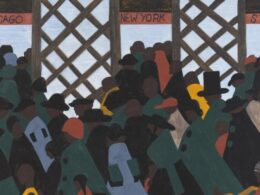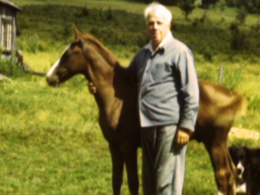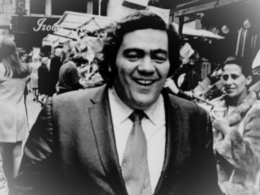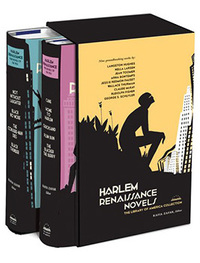
In connection with the publication in September 2011 of the two-volume collection Harlem Renaissance Novels, edited by Rafia Zafar, Rich Kelley conducted this exclusive interview for The Library of America.
LOA: The Harlem Renaissance is generally agreed to have started around 1919 and ended in the early to mid-1930s, with its peak in the period from 1924 to 1929, but seems to mean different things to different people. How would you describe it?
Zafar: While many view the Harlem Renaissance as primarily a literary movement, it actually encompassed music, theater, and the visual arts, and reached into every aspect of the African American experience of the time. In literary terms what happened during this period was epochal. David Levering Lewis has pointed out that in the nineteen years after Charles W. Chesnutt published The Colonel’s Dream in 1905, only five African Americans published significant books. By contrast, between 1922 and 1937 the sixteen best-known black authors of the Harlem Renaissance published more than fifty books.
One of the issues is the nomenclature, “Harlem Renaissance.” Because few of the writers and artists were native New Yorkers, and the arts that flourished did not always take place within the city’s borders, one can argue that a broader term like “Negro Renaissance” or “Black Renaissance” would be more appropriate.
This efflorescence of writing appeared in good part due to a confluence of historical events occurring between the time of World War and the depths of the Great Depression. African American soldiers returning from the World War I were changed forever not only by the conflict but by the interracial possibilities they experienced first-hand abroad. The race riots that followed the return of these veterans and the increased push for Civil Rights at home; the internal migration that brought southern migrants into northern cities where they could experience greater opportunities for employment, decent housing, and education, if not utopia; Pan-Africanism and the Marcus Garvey movement—all of these and other events that would take another interview to cover, helped ignite this Renaissance.
One cannot strictly put a start or an end date, however: James Weldon Johnson first published The Autobiography of an Ex-Colored Man in 1912, anonymously—he didn’t publish it under his own name until 1927; conversely, other writers who began publishing during this period—Arna Bontemps and Zora Neale Hurston, to name two—continued publishing for decades afterwards. New books by black writers published by mainstream presses fell off during the 1930s because of the economy—but one could say that the federal government then provided a kind of safety net, however small and for however few, through the Federal Writers’ Project.
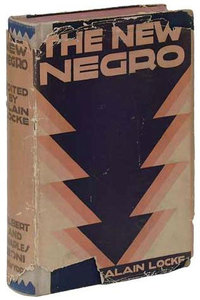
LOA: One of the seminal works of the Harlem Renaissance was Alain Locke’s 1925 anthology The New Negro. Writers included in that volume (notably five of the novelists in the LOA volumes: Arna Bontemps, Rudolph Fisher, Langston Hughes, Claude McKay, and Jean Toomer) celebrated “The New Negro Movement.” Did all of the writers collected in these two volumes see themselves as part of that movement?
Zafar: Some did and some did not consider themselves part of a “movement.” George Schuyler, author of the skeptical essay “The Negro Art Hokum,” would certainly not claim membership in such a group. Hughes, Wallace Thurman, Zora Neale Hurston and others, however, did identify as self-conscious members of such a movement. Locke’s The New Negro, on the other hand, included contributors of different ages, white and black, American and international. And Toomer, of course, is famous for deciding that he didn’t want to be considered a “Negro” at all.
We should keep in mind that literary movements are not recognized as such until they are under way—or until after the fact. But did all of these black writers notice that some fabulous energy was being generated? Yes.
LOA: Charles T. Davis has called Cane by Jean Toomer “the most exciting single work produced by the movement.” Robert A. Bone in The Negro Novel in America wrote, “By far the most impressive product of the Negro Renaissance, Cane ranks with Richard Wright’s Native Son and Ralph Ellison’s Invisible Man as a measure of the Negro novelist’s highest achievement.” What is it about this innovative mix of prose, poetry, prose poetry, fiction and dramatic dialogue that makes a writer like Alice Walker say “she could not possibly exist without it.”
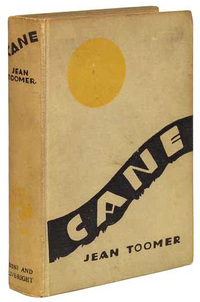
Zafar: Cane stands out as a literary work because of Toomer’s self-conscious stylistic modernism, a break from earlier literary styles that was more apparent in its distinctive forms than, say, Nella Larsen’s. His emphasis on everyday people, striking imagery, and curious and sometimes controversial ideas about gender, coupled with sharp—if uncomfortable—insight about the role of the intellectual within that everyday world, remains arresting. I also think that his vision of the rural south can overshadow his portrait of the chocolate city of Washington, D.C.
LOA: Claude McKay’s Home to Harlem (1928), with its vivid and seductive depiction of street and night life in Harlem, was probably as responsible as any book for romanticizing Harlem, yet W. E. B. Du Bois criticized McKay for appealing to the “prurient demand[s]” of white readers in his portrayal of black “licentiousness.” What was McKay’s intention? Did Home to Harlem appeal to white readers for reasons that differed from why it appealed to black readers?
Zafar: I love telling my students that Du Bois really wrote that he felt like taking a bath after reading Home to Harlem. McKay’s letters reveal he was much more interested in writing about the average Joe and Jane than he was about the burgeoning middle class. As an immigrant who came from a farming family, and whose first collections of poetry were in Jamaican English vernacular—not to mention an early, very brief career as a colonial constabulary—McKay had a much more, shall we say, panoramic view of life than the Massachusetts-born and -bred Du Bois. And while there were those white readers who thought that McKay was giving them “the real low down on Harlem” (I think the New York Times review said pretty much that), younger authors like Wallace Thurman and Zora Neale Hurston—not to mention the African American public, who enjoyed performances by salty lyricist-singers like Alberta Hunter—would have known that McKay was right on target.
LOA: I find it interesting that you chose to include Nella Larsen’s questing identity novel Quicksand instead of Passing, her intriguing novel of racial and sexual ambiguity. It had to be a difficult choice. Why Quicksand? Was it because you favor Jessie Redmon Fauset’s treatment of “passing” in Plum Bun?
Zafar: It was difficult! With Plum Bun, one has the passing theme, as of course does Larsen’s second novel. Yet I chose to include Plum Bun not only for its handling of those who cross the color line but also for its depiction of a well-brought-up black woman’s decision to live la vie bohème. For Fauset’s Angela Murray to have sex outside of marriage—and not be punished for that decision—challenges ideas about a tightly laced brown bourgeoisie. Fauset’s casting her character’s narrative as a modern fairy tale, as Deborah McDowell has shown in “The Changing Same”: Black Women’s Literature, Criticism, and Theory, gives us an interesting take on a familiar genre.
As for my choice of Larsen’s first novel rather than her second—Quicksand adds to the LOA set a psychologically astute treatment of the (supposedly) tragic mulatto. In the nineteenth century, characters “caught” between the white world and the black generally ended up dead; Quicksand’s Helga Crane does not die by her own hand, but her inability to choose one category over another, and her imprisonment within the heterosexual female gender role, lead to a different kind of troubled ending.
In other words, I asked myself how could I get the most extensive representation of writing styles, themes, generic experiments, and so on within a limited number of pages? I would have loved to put in every Renaissance novel published!
LOA: Perhaps because of his youth, his outspokenness, and his bohemian lifestyle, Dorothy West called Wallace Thurman “the most symbolic figure of the Literary Renaissance in Harlem.” Dark-skinned himself, Thurman defied convention by making the heroine of The Blacker the Berry (1929) “too black . . . dipped, as it were, in indigo ink.” Through her experiences, Thurman explores interracial prejudice, homosexuality, abortion, and ethnic conflict between African Americans and Caribbean Americans. Did readers feel Thurman was violating shibboleths in confronting these issues?
Zafar: When Thurman has his novel’s heroine Emma Lou come home to her boyfriend and see “the usual and expected sight: Alva, his face a death mask, sitting on the bed embracing an effeminate boy,” he surely wasn’t expecting applause from the uplifters. His bona fides for shaking things up went back a ways.
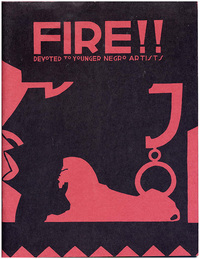
Three years before the eyebrow-raising themes of The Blacker the Berry, Thurman shocked many by co-editing the scandalous, published-for-one-issue journal Fire!! A Quarterly Devoted to Younger Negro Artists. Included among its provocative selections were a short story about a homosexual pickup, a viscerally imagist poem about lynching, and a play about intraracial prejudice. So of course, some of his readers were shocked—but others applauded.
LOA: While best known for his poetry, Langston Hughes recreated the experience of growing up black in Kansas in his semi-autobiographical character-rich novel Not Without Laughter (1930). Does Hughes get at something through his Midwestern lens that the Harlem settings of the other novels are not able to?
Zafar: Yes, one of the reasons I included Not Without Laughter was to break down ideas about the “Harlem Renaissance” only being about New York City—or for that matter, about rural folks in the deep south, à la Toomer. Although there is another American classic that begins with a tornado in Kansas, there are few other similarities between this one and the L. Frank Baum novel (how can I resist pointing out this congruence?). Hughes’s boy’s-eye view of growing up poor but aspirational I find simply beautiful—just as some of his reflections on the bedrock nature of racism hit me equally hard. Few have painted as astutely the roller coaster of emotions that illuminate the life of a poor black child.
LOA: George S. Schuyler’s satire Black No More (1931) imagines a world where scientists can transform blacks into whites and it includes caricatures of W.E.B. Du Bois, Marcus Garvey, and James Weldon Johnson, among others. Schuyler was a famous debunker of the Harlem Renaissance and later became a widely syndicated conservative columnist. Is it fair to say that the Harlem Renaissance could accommodate writers all along the political spectrum—or are satirists (or Schuyler in particular) a special case?
Zafar: Satirists always step on toes, and Schuyler was no exception. At the height of what one could call a “black is beautiful moment,” not everyone was thrilled by a novel that implied that, under the right conditions, masses of African Americans would leap at the chance to become white. If we go beyond binary ideas of “right” or “left” we can not only understand but admire that the Renaissance had many political perspectives, from Garvey’s populist Pan Africanism to Schuyler’s acerbic joustings to classic civil rights activists like James Weldon Johnson and Walter White.
LOA: The Conjure-Man Dies (1932) by Rudolph Fisher may be best known as the first detective novel with a black detective and all black characters. Are there other notable things about it?
Zafar: Fisher’s first novel, The Walls of Jericho, included a glossary of Harlem slang. In Conjure-Man Fisher continues his exuberant use of up-to-date urban vernacular, as when the character Bubber says about a speedy exit, “I made Lenox Avenue in nothin’ and no fifths.” Fisher’s fictional friends Bubber and Jinx draw on the tradition of black vaudeville performers, adding a theatrical quality to the novel. I would also draw the reader’s attention to Fisher’s playful engagement with the idea of an ancestral Africa, which both trades in stereotypes and undermines them.
LOA: Black Thunder (1936) by Arna Bontemps is the only novel in the collection that recreates a historical event, in this case Gabriel Prosser’s slave revolt in Richmond, Virginia in 1800. Charles W. Chesnutt attempted a similar reclamation of a historical event in The Marrow of Tradition (1901). How does Bontemps’s effort compare with Chesnutt’s?
Zafar: What’s particularly notable about Black Thunder is that Bontemps reaches back so far—Chesnutt’s novel imaginatively recreated a relatively recent event, the horrific anti-black Wilmington, North Carolina riots of 1898 (Marrow was published three years later). Bontemps reconstructs a historical figure, Gabriel Prosser, who already had passed emphatically into folk tradition. So in some ways it’s fair to say that the two authors, although crafting historical fiction, had different contemporary agendas. Bontemps, who would later become Fisk University’s archivist, understood that heroic black figures like Prosser need sympathetic authors to script their nearly mythic lives; black narratives of progress become potent when historical actors stand at the center.
LOA: Some black critics, like Hubert Harrison, find the concept of the Harlem Renaissance misguided and claim that it neglects or overlooks the “the stream of literary and artistic products which had flowed uninterruptedly from Negro writers from 1850 to the present.” Is it unfair? Why do the writers and writings of the Harlem Renaissance deserve special recognition?
Zafar: I continue using the term “Harlem Renaissance” because for so many people of African descent, whether they were American born, immigrants, or folks passing through, Harlem served as a synecdoche, a magnet for black culture in the twentieth-century U.S. Harlem cannot claim that all of its creative artists were native-born, but the area itself served as an ideal.
As for a continuum of black writers existing before the Renaissance—of course. My earlier work celebrates what one could call the Naissance of black writing in America. When I began graduate study I wanted to write on the Harlem Renaissance because those were the writers I had read or read about—Jean Toomer, Jessie Fauset, James Weldon Johnson. Yet early on I realized there could be no rebirth without a birth—and so I kept reading backwards into the eighteenth century. My first publications focused on writers before 1900.

LOA: How has studying the Harlem Renaissance affected you personally?
Zafar: My upbringing perhaps predicted this turn of scholarship. As a girl I lived in Harlem for a time; my father was born and raised there, and his mother had migrated north from Virginia with her family as a child. The first time I read the chapter in Home to Harlem where Jake wanders around a rural Bronx, I was reminded of my grandmother’s telling me, as we looked out her living room window across a sea of apartment house roofs, that when she was a girl the view “was just fields.” So when I worked on these volumes I had known for a long time that there was a “before” the Renaissance and in fact felt that it was part of my personal history: my father was born in Harlem in 1924, just as the era began to crest.
LOA: The Harlem Renaissance embraced much more than fiction. In fact, Arnold Rampersad credits the flowering of the American Studies movement in the 1950s—with its blending of research on history, literature, music, psychology and folklore—with the discovery of the broad range of works that have come to characterize the Harlem Renaissance. Given that, might there be other Library of America volumes on the Harlem Renaissance that reflect its achievements in other areas?
Zafar: There are other LOA volumes of authors active during the Renaissance, if not associated strictly with its heyday: W.E.B. Du Bois, James Weldon Johnson, Zora Neale Hurston. For a variety of reasons women authors did not publish book-length works as frequently as male writers (although Fauset published four novels, more than most figures active at the time). Volumes gathering poetry, short fiction, drama and essays of the period would be great.
